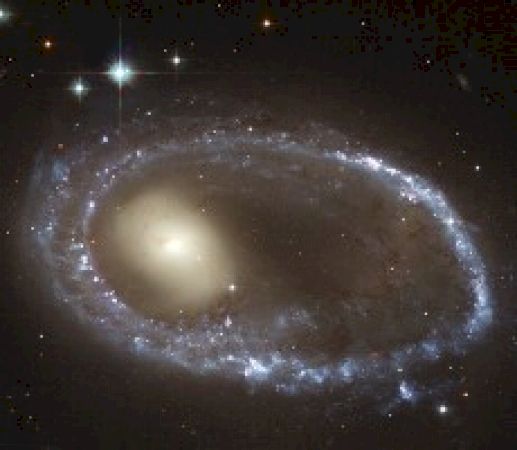
A gaggle of volunteers with Galaxy Zoo have been scouring information, utilizing machine studying and an AI assistant, named Zoobot, to find an unprecedented variety of ring galaxies. The cyborg strategy has been in a position to determine 40,000 ring galaxies thus far, which is six instances greater than beforehand identified.
The universe is full of many awe inspiring galaxies, with a few of them formed like a hoop. Ring galaxies are the results of smaller galaxies passing by bigger ones, with their particular person stars not often coming into contact with each other. The ring-like form is the results of the gravitational disruption attributable to the collision of the 2 galaxies. Once this occurs, interstellar fuel and mud turn out to be compressed, leading to a wave of star formation that strikes out from the impression level like “a ripple across the surface of a pond,” based on NASA. Ring galaxy AM 0644-741, captured by the Hubble Space Telescope, will be seen within the prime picture.
Dr. Mike Walmsley of the University of Manchester, and the group of volunteers with the Galaxy Zoo collaboration, have offered a brand new work describing how the “cyborg” strategy resulted to find an unprecedented 40,000 ring galaxies.
Aiding the crew of galaxy hunters was an AI algorithm educated utilizing the volunteers’ measurements over the course of a decade, which totaled greater than 96 million clicks. Zoobot, the named algorithm, can’t solely precisely predict what volunteers would say, but in addition understands where errors may need been made.
In a weblog publish on the Galaxy Zoo web site, volunteers have been thanked for his or her exhausting work that befell over a ten month interval. Over 100,000 galaxies have been checked out throughout that point, leading to one million swipes. Dr. Walmsley said, “I used the first half of your swipes to teach an artificial intelligence algorithm what a ring looks like. Then I set the algorithm searching a million DESI galaxies to find more rings.”
Dr. Walmsley indicated that he then took the galaxies the AI thought may need rings after which requested the volunteers to test them. The two step strategy allowed the crew to go looking extra galaxies extra rapidly, whereas having “human eyes vet” all the discoveries.
Zoobot is just not restricted to looking for simply ring galaxies, nonetheless. It is designed to be retrained time and again for brand new science targets. Dr. Walmsley remarked, “With Zoobot, humans and machines are collaborating to push the science of astronomy forward. We’re helping other astronomers solve questions we never thought to ask.”
Top Image Credit: Hubble Heritage Team/NASA









